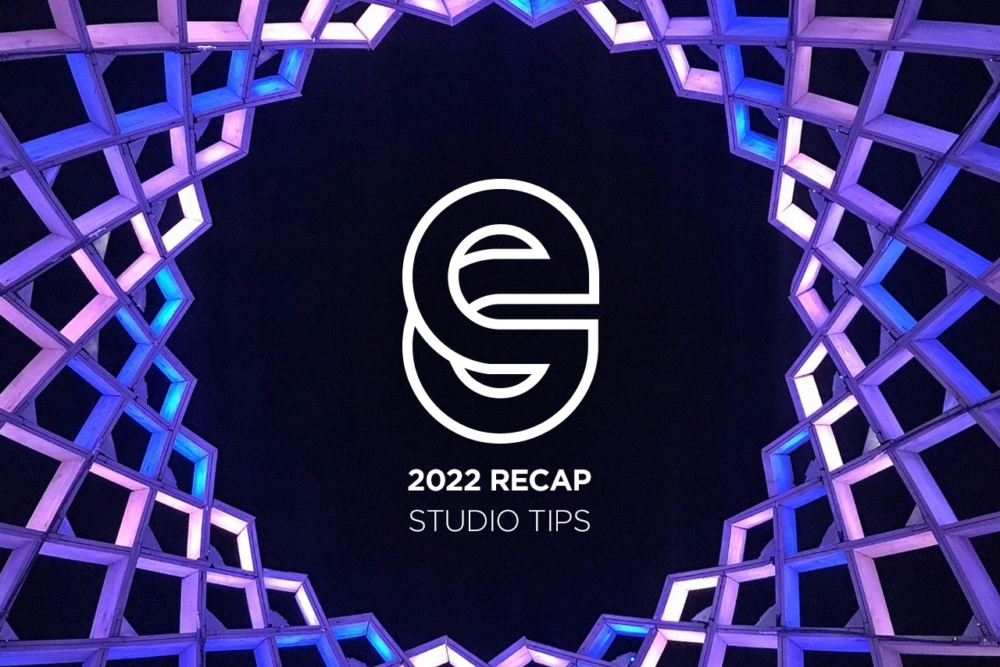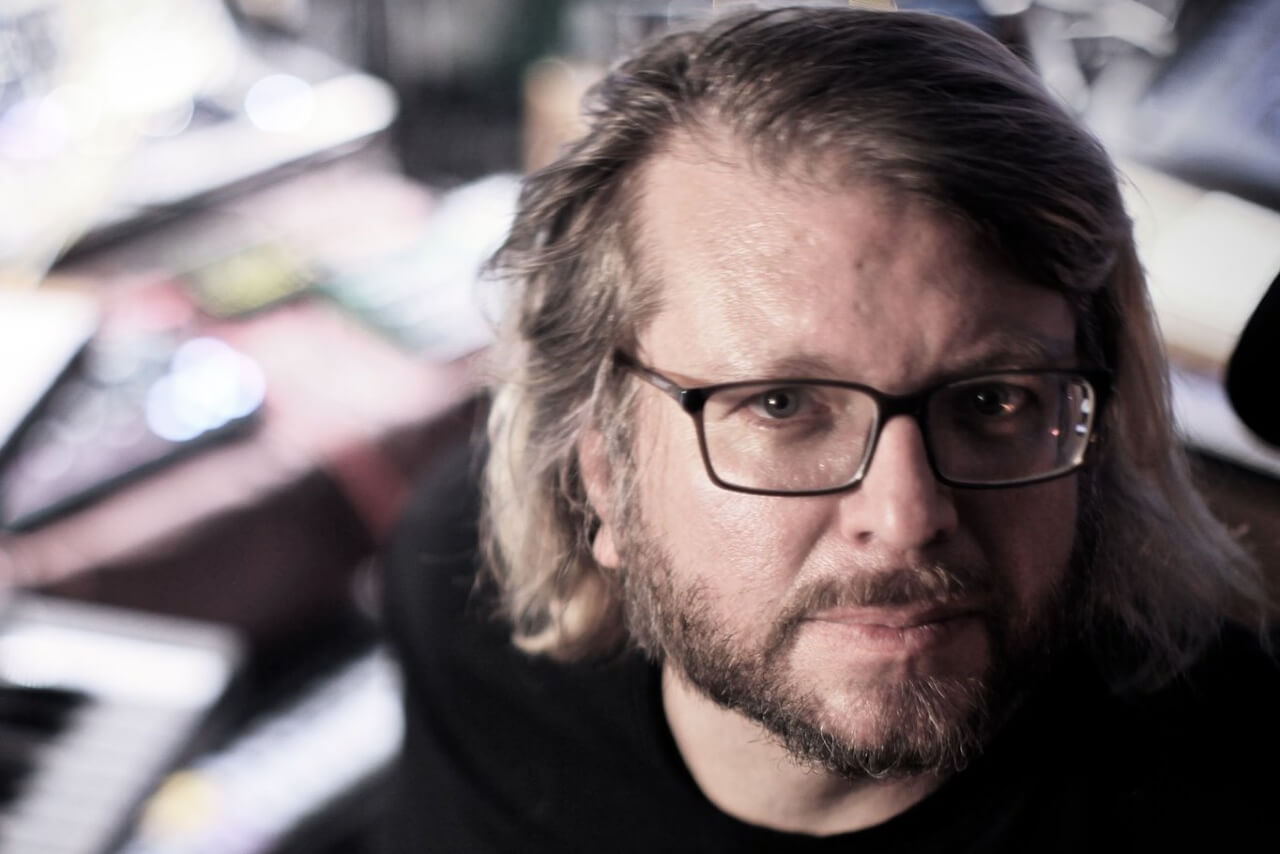As we end another year filled with new music and memories, we took some time to step back inside the studio and read one more time the many production tips that have been shared by top artists over the year. From highly detailed instructions for a better sound and on to creative insights, these artists held nothing back.
Here we selected 22 of the most unique studio tips (in alphabetical order) that will take your game to the next level.
- Use long loops
Loops are the basis of electronic music, but that doesn’t mean it has to sound repetitive. Try creating long and shifting loops to get a more organic feel to your sound. This will add quality to your songs. You can also try making loops of different durations than the conventional ones. This will give your songs an unpredictable effect.
- Know thyself
When you are ready to start working, ask yourself – what do you really feel like doing right now? Somedays, my hearing feels exceptionally good, so I might work on mixdowns.
On other days I might have a melody in my head, so I start with that. I might feel like trying out new plug-ins, rearranging my sample folder…or even cleaning the studio!
When I was making ‘Versions’, I had a handful of days where I was laser-focused on remixing my old tracks into what you can hear on the record. I did nothing else in the studio during that time as I felt it would break the spell.
- Clean your stems
Most of the samples out there are made for music production but they need to be edited and mixed properly. The same with synth plugins, external gear recordings, and even some effects. With editing, I mean cleaning the frequencies. A hi-hat for example needs to be present in a frequency range between 4-16khz. Everything below is just useless dirt that can destroy your mix. Especially snare drums are sometimes coming with some heavy low frequency which is very disturbing for a clean sounding low-end. Make sure that you cut off the low or high-frequency ranges for sounds or samples that are not meant to play at these frequencies.

- The grid
I find it useful for kicks on the downbeat and maybe a clap on the 2/4 if that’s what’s called for but I usually try to have everything else off the grid. Everyone plays instruments differently so this is a great way to stick out from the crowd. If you use loops, chop them up. Shift the timing. Develop your own feel.
- Envelope generators
Envelope generators like LFO Tool or Volume Shaper are incredibly powerful tools. There are a million creative ways to use them outside of creating a standard side-chain effect. Here are a few of my favorite ways to use them:
a) To help refine the shape of my kick. As compression builds up in the track it can turn your kick into a shapeless sausage. It’s almost always really beneficial to bring a nice smooth taper shape back into the kick.
b) To create or refine shaker/hat sounds & loops. Love finding interesting foley soundscapes and running them through a tight 16th grid volume shaper to create an interesting layer to my shakers. Similarly, if I’m working with a loop that is slightly loose and editing/warping isn’t making it tight enough I can use the same technique to tighten it up and bring it into line.
c) On pads or other sustained elements to create rhythm. Similar to classic gating techniques, but way easier and with really precise control.
- Print out a leaflet to stick on the wall with written: ‘Dynamics & Modulations’
Always remember to play with decays, sustains, release, panning, and adding randomness to your grooves. Max For Live has some nice tools to do that. Try to think outside the box and have fun trying things, different combinations, and find your own tricks. Try different than 4/16/32 etc on your groove elements, and see where it takes you. Unpredictability is cool.

- Trust your gut
Make what you think is right. Keep bringing it back to you and your creative vision and make sure that you’re not producing for anyone else or with anyone else in mind. A lot of people produce what they think other people might like but make what you think is right for you. That way, no matter what the outcome of the record, at least you can say you were true to yourself and you’ve made a track that you personally would play. For me, basslines come in seconds, as do melodies but it often boils down to a process of elimination in choosing which to stick with and which not to stick with at which point you need to trust your gut and your taste. Every DJ trusts their taste in music when they’re selecting tracks for a mix yet when we come to producing our own records we all overthink it. In the early years, I was making music for labels, not for me and I ended up with a pile of material that was unsigned and that I just wouldn’t play in my sets.
- Variations
Don’t be lazy. Dedicate all the time you need to edit and structure your track in the timeline, have fun doing it, try things, add new elements, remove them, try effects, etc… In my case, when I create a track, I usually make up to 6 different melodies to have different points of view. I also use a lot of acapellas to inspire me in the melodies, I play a lot with the key changes. For example, if the main melody is in A minor, the bass line starts in D minor to give a change.
- Space
In electronic music with heavy basses, kicks, and deep midrange synths, it’s important to create space for each element. Besides EQ-ing, I like to use the plug-in ‘Trackspacer’. It’s a sidechain compressor for a specific frequency spectrum. For example, in order not to lose the high frequencies in my bassline, I only compress everything below 150hz.

- How to get a loud master
Use the Sonnox Limiter to increase the input, and shape it with the pre-process (work the attack, release, and also the soft knee for the signal to reduce its gain). Use “Enhance” to make the track even louder without causing sample overvalues. Don’t push the “Enhance” button too much, a maximum of 50 %. And the output at -1 Db.
Later add FabFilter Pro L2 to recover the signal with the “Gain” and shape again with the attack and release. Do not forget to activate the oversampling (I Recommend 16x, or if your PC is not new between 4x or 8x). Check the gain reduction on the master. I usually try to push between -3db and -6db. Always trust your ears. Hope it works for you!
- Add aggression to your drums
Set up a bus and send all of your drums to it, including your kick. Add some saturation and add very aggressive compression to the bus, with a slow enough attack to let the initial transients through. Mix this in under your original drums for extra transient energy and to bring up the tails of the drum samples. The saturation will also add some subtle grit to the drums.
- The power of the mute button
If you’re like me, you might have the tendency to keep adding to a track. I’m slowly learning more and more that: less is more. Crafting fewer elements to sound bigger can often sound crisper and clearer. Adding another thing obscures the other & muting that part that’s not adding particularly much can have a massive impact on the overall picture. I like to make sure every part & layer is totally necessary & bringing something vital to the lifeblood of the track.

- Give things time
I have friends that finish a track and do the mixdown the next day, and this may work for some people, but for me, I think it’s important to space out different parts of the production process. For example, after finishing arranging a track, I will often leave the project alone for 1 month before coming back to it to make the finishing touches and complete the mixdown. This way you have a chance to check the track on many different devices and gain some objectivity that long studio sessions often lack. After this 1 month, I will usually come back to the track and notice things I didn’t when I had the arrangement session, listening to the track for 10 hours straight.
- Listen to your tracks with your eyes closed
Or bounce them and listen somewhere other than the studio. The pitfall is to only listen while looking at your DAW, which is a bit counterproductive. You can see the sounds coming, so you anticipate them more. You also mix with your eyes and miss the experience other people will have while listening to your stuff. I tend to bounce often, walk out and check my mixes while looking at some trees, or while walking around. Another bonus of this practice is hearing your track on different sound systems which will tell you a lot about your mix.
- Melodies forever
So if you are a worker in any genre of dance or electronica and you are wanting to lean into something more melodic, here are some helpful ways to help get the brain to enter what we want to call “the flow”, where you can connect with emotions and put together something that feels good in your track. This also triggers your listener driving down the road to feeling something real as well.
Learn a primary instrument. This means either taking piano or guitar lessons, or even a string like a violin. You can either do this on youtube or IRL. Understanding basic knowledge of where things fit together can help you get quicker in the melodic writing process and come up with interesting chords that wouldn’t normally fit together finger picking on white keys. It’s important to know that you don’t HAVE to take any lessons. But you do need to spend time not turning your shakers up and down and just PERFORM. Load up a pad or a lead and just get comfortable playing until it is. Do an hour a day and you will see improvement.
Listen to music that makes you feel something. Important that it’s ALL music. Yes, that Above & Beyond track or that big room banger from 2012 makes you feel something, but I think you should keep going back on your timeline. What song did you scream and cry to when you first got dumped? And when someone left for the other side? When you met “the one” for the 39489th time? Go back and listen to THAT song. Try to understand what is happening that is triggering the emotion. Is it the lyric? the drums? the arrangement? All together? Let the music that moved you in your life become embedded in your mind. Because really all we are doing as songwriters is simply rearranging the hundreds of thousands of songs we have heard since we were kids.
Minor chords. Learn to use them. Learn their strength to take something fluffy and make it powerful with just one simple note change. Read chord charts, learn what minors go with majors, and don’t be afraid to allow your track to get an edge or get dark… You can always mirror reflect with your lyric or with a dynamic change in the next section of your arrangement.

- Tighten up sounds and create grooves with gate
In a nutshell, Gate turns down quiet sounds under a certain threshold, allowing only a certain loudness of audio to pass through. This can get rid of unwanted background noise, or the long tail of an annoying kick drum.
You can also use it to apply the groove of a stem to another one. For example, put the gate on your shaker loop then sidechain the gate on the arpeggio of your track, then it applies the groove of the arpeggio on the shaker.
Use the predominant element for the rest of the tracks
Turn your melodic hook into MIDI to get both the rhythm and the notes of it. Then use that groove/notes for your bass and other melodic stems, and use the groove/rhythm for percussion. Extract the predominant groove of your rhythmics and apply it to some of the elements. It will create a whole that is coherent and that fits the groove of the track to perfection.
Partenaire
- Stereo image
In layman’s terms, ‘stereo width’ is achieved by the placement of sounds in a ‘left to right’ field, while the perception of ‘depth’ is achieved by the notion of ‘front to back’.
You can send tracks to a bus with a delay with different time signatures and add some automated LFOs, so so that the LFOs control the modulation. This generates movement in the extremes, generating syncopation.
Depth is often achieved by the use of reverb. Sounds with more reverb sound farther away, while drier sounds feel closer and more upfront to the listener.
To add more ‘space’, you can affect two parameters at the same time. You can generate this by setting up a bus with an audio effect rack, featuring an EQ8 + Reverb, and setting up a Macro to control frequencies on the EQ8 and the Dry/Wet signal on the Reverb. Now, adjust the Macro and see what happens.
Stop using excessive EQ
If your EQ curve looks like the swiss alps, then you are probably destroying the elements’ clarity and punch. This is because every EQ point constantly changes the signal’s phase relations. So less is always more. If a sound needs a lot of eq, then maybe you made a wrong sound choice, and it will be much better if you exchange the sound.
- Perfectionists are dumb
It’s very frustrating sometimes to get the exact song idea from your head down on paper. It’s like trying to draw someone’s face by memory. None of your music is exactly what you had in mind. You’d be lucky to even like it by the time you’re done with it. Even if you don’t like anything about the final draft of the song, you can remove parts and substitute elements within the track and have something better. The song ‘More Than The Last’ in ‘Warehouse Poetry’ is an example of one of those songs that have gotten that treatment. Another note: you’re never going to finish a song. You can continue to add to it until you die. You don’t finish songs, you let them go.
- Gauging feedback
It can be helpful to get feedback from other people. But it’s important to know what their values are, and how to handle them. Most people can’t really put a finger on what’s wrong with a track, unfortunately. I think it’s good to ask them how they feel, and you can interpret that, rather than asking what could be wrong.
And remember that a piece of music is not necessarily for everybody, what could be bad for somebody might be amazing for somebody else.
- Source your samples from unique places. Get creative!
There is nothing inherently wrong with relying on sample or midi packs that you see on hard rotation on your unskippable YouTube ads. Some of them are genuinely decent. But don’t rely on them forever. You will really struggle to find your own voice as an artist. Trust me, there is nothing lamer than being at a music feedback session with other budding music producers, and 3 people back to back showing their tracks, all of whom ended up using the same loop from that Nico dude on YouTube who says “You want a beautiful melody, I Got you!!”, and everybody recognizes it! There is some serious face-palming to be done there!!
You have got to start doing what the truly innovative pros do and listen to the real world.
Field recordings – If you don’t have a decent Zoom mic, get started by using the mic on your phone, take some random household objects into the quietest room you can find, and start banging and clanging them together. You can make some really unique top-end textures with the audio file. Also, take your phone to the park, walk on some dry leaves, take it to the highstreet and record some buskers, or people chatting…..use this as background texture for your track, or even acapella vocals that you can chop up. (Top-tip: it is not advised for you to use field recordings recorded on a phone to make low-end sounds, like Kicks and Bass, as it’s better to get the highest quality sound recording for low-end.
Sample from Vinyl – If you want warm sounds, and you haven’t got a modular setup or synth racks, start sampling your parent’s old vinyl collection and rip it to WAV. Find really obscure dubplates, B-sides, start searching for moments in each track (usually the very beginning or the middle 8) where you have 4 seconds of isolated drums, or an isolated vocal, and compile your own library of sounds to use in your own tracks.
There are a whole bunch of background textures all over my album ‘Flesh’ that I got from walking around London and just recording on my Zoom Mic.
E.G: the sound of the London bus beeping as the doors close, the London underground, with a saxophone playing busker, The hustle and bustle of Mile End high street, etc. Also, even though some of the drums in some of the tracks did come from a collection of 2 UK Garage sample packs (‘Incognito’ and ‘Out of the Green’ in particular) the drums for a lot of the tracks were created from Zoom Mic recordings of random drums and sticks in the music room at my school!










